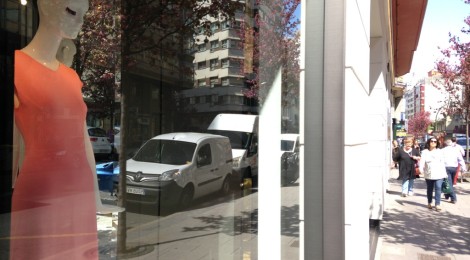
Made in A Coruña: Zara’s Fast Fashion Empire
Galicia, like Portland, is known for its wet weather but the skies are blue and spring is in the air when we arrive in A Coruña. The sun is shining, the flowering trees are blooming and the pedestrian shopping streets are filled with people sporting transitional fashions and carrying shopping bags from Zara, the Spanish clothing retailer headquartered just outside the city that catalyzed the fast fashion phenomenon.
With catwalk-inspired styles and hyper-responsive lead times, the fast fashion business model has burst the traditional two-season seams of the fashion calendar. Thanks to the supply chain innovations of Zara, H&M, Express, Forever 21 and others, fast fashion garments can travel from a designer’s sketchpad to your closet in a matter of weeks. While some praise fast fashion for democratizing the industry and bringing high-fashion trends within reach of mainstream consumers, others are deeply troubled by the environmental impacts of increased garment production and consumption including increased water use, chemical pollution and landfill from disposable clothing, as well as by the social welfare issues associated with sweatshop labor conditions in developing countries where most fast fashion garments are made. This week marks the one-year anniversary of the Rana Plaza garment factory collapse in Dhaka, Bangladesh in which 1,129 people died and over 2,500 people were rescued.
Unlike its primary competitors, Zara’s business model is vertically integrated. All Zara design, distribution and over 60 percent of the brand’s manufacturing happens here in A Coruña, in other factories in Northern Spain, and in the neighbor countries of Portugal and Morocco. (Basics like t-shirts are largely outsourced in higher volumes and at slower intervals from South American and Far East-based factories where, in cases, fair and safe labor practice issues have been raised.) It has been reported that Zara created over 2,000 direct and indirect jobs in Spain last year, and that its parent company, Inditex, plans to open 500 stores in 2014 with the Zara brand leading the way. Inditex is the world’s largest retailer and Spain’s largest company by value, and its founder, Amancio Ortega, valued at $64.1 billion, is listed by Forbes as the 4th wealthiest person in the world. In a Spanish economy struggling to recover from a double-dip recession, Zara, like the ancient Roman lighthouse that shines out from A Coruña’s rocky coast, is a national beacon of hope.
In the original Zara store, the display windows are filled with fun, flirty cuts in power pastels. Inside, women from age seventeen to seventy-five look through the racks of fashionable, wearable styles. And me? I’m swept up in A Coruna’s undertow. I purchase a cobalt blue scarf.
On trend,
Alison
Resources:
http://www.flare.com/fashion/a-visit-to-zaras-headquarters-in-spain/
http://www.inditex.com/en/brands/zara
http://www.arabnews.com/news/542936



Recent Comments